Lada: Jump Over Fire For Goddess Of Beauty, Love, And Marriage In Slavic Mythology
A. Sutherland - AncientPages.com - Ancient belief in Lada, a goddess of beauty, love, and fertility, was widespread in the Baltic and Slavic regions of Europe.
Lada - a goddess in Slavic ancient beliefs. Image credit: Max presnyakov - CC BY-SA 3.0
Lada and her male counterpart, Lado, are usually referred to together in songs related to wedding ceremonies and activities such as planting and harvesting, accompanied by the Sun, grain, and water.
Sometimes as multiple deities, Lada and Lado were considered to be divine twins or a mother goddess and her son. To the ancient Slavs, the name ‘Lada’ was related to the original goddess of love and the entire order of life, where everything exists in perfect harmony.
Ancient Slavic people used to say symbolically "Lada" when they decided on some important agreements, business, important daily events, or baked pancakes in the spring to honor the reviving of life, plants, and the whole nature. During such events, people sang: sang: Bless, mother, Oh, mother Lada, mother… She was approached with prayers and requests (mostly in spring and summer - the time when nature wakes up from hibernation).
The Slavs believed the goddess Lada was Svarog's wife. In other versions, the god Perun was her husband.
It was believed that any place Lada visited was always warm and comfortable, a home-like place. Usually, she was the mother of all months of the year—Lada—depicted as a woman in the prime of life and full-bodied, a symbol of mature motherhood.
Lada was a young, beautiful girl with long golden hair decorated with pearls in other appearances. A crown wreathed in pink flowers adorned her head, and the goddess seemed to shine. The image of this goddess was often carved out on stones by ancient warriors, who believed that Lada protected their lives and would save them from the enemy.
Lada's symbol is a white swan, which symbolizes purity, loyalty, and mutual understanding. This goddess was designated on amulets with a circle inside, placed in an inverted triangle. The circle represents the entire universe, and the triangle is its center, its heart.
Some scholars have suggested that Lada and Lado are not the names of deities but rather refrain in songs and poetry. Others suggested ‘Lada’ could be related to the Russian word: ‘Lad’ – peace, harmony, union.
However, many songs and historical chronicles provide evidence for a cult of worship, which is historically attested in Russia during springtime fertility rites and in Polish church prohibitions on pagan rituals. Generally, the goddess Lada was known to many European nations, where one ritual—jumping over the fire—was performed in her honor. Its purpose was to ensure fertility and protect people and cattle from evil powers. Offerings to the goddess included sweet honey, beautiful flowers, and ripe liquid berries.
Updated on March 19, 2024
Written by – A. Sutherland AncientPages.com Staff Writer
Copyright © AncientPages.com All rights reserved. This material may not be published, broadcast, rewritten or redistributed in whole or part without the express written permission of AncientPages.com
Expand for referencesReferences:
Kononenko N. Slavic Folklore
Dixon-Kennedy M. Encyclopedia of Russian & Slavic Myth and Legend
More From Ancient Pages
-
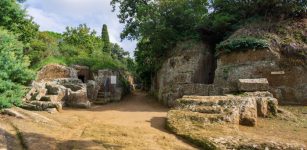 Etruscan City Of Cerveteri With Magnificent House-Like Tombs Decorated With Scenes From Life And Death
Featured Stories | May 17, 2022
Etruscan City Of Cerveteri With Magnificent House-Like Tombs Decorated With Scenes From Life And Death
Featured Stories | May 17, 2022 -
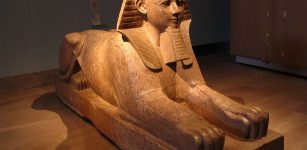 Why Was Pharaoh Hatshepsut’s Reign Virtually Erased From History?
Featured Stories | Nov 9, 2014
Why Was Pharaoh Hatshepsut’s Reign Virtually Erased From History?
Featured Stories | Nov 9, 2014 -
 What Was The Role Of The Priests And Priestesses In Ancient Greece?
Ancient History Facts | Jul 27, 2016
What Was The Role Of The Priests And Priestesses In Ancient Greece?
Ancient History Facts | Jul 27, 2016 -
 Forseti: Norse God Of Justice And Lawmaker Who Lived In A Shining House
Featured Stories | May 1, 2016
Forseti: Norse God Of Justice And Lawmaker Who Lived In A Shining House
Featured Stories | May 1, 2016 -
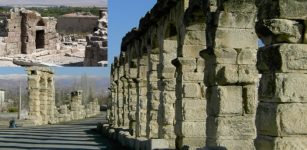 Ancient City Of Tyana And A 1600-Year-Old Rare Octagonal Church Unearthed In Central Anatolia Turkey
Archaeology | Aug 11, 2020
Ancient City Of Tyana And A 1600-Year-Old Rare Octagonal Church Unearthed In Central Anatolia Turkey
Archaeology | Aug 11, 2020 -
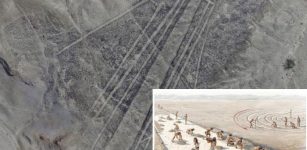 Dozens Of Giant ‘Lost’ Nazca Geoglyphs Unearthed By Drones In Peru
Archaeology | Apr 7, 2018
Dozens Of Giant ‘Lost’ Nazca Geoglyphs Unearthed By Drones In Peru
Archaeology | Apr 7, 2018 -
 The Opening Of Pandora’s Box May Have Been A Real Event
Myths & Legends | Jun 22, 2021
The Opening Of Pandora’s Box May Have Been A Real Event
Myths & Legends | Jun 22, 2021 -
 Terracina – Ancient City Where Mythology And History Meet
Featured Stories | Jan 16, 2024
Terracina – Ancient City Where Mythology And History Meet
Featured Stories | Jan 16, 2024 -
 Remarkable Discovery – 22,000-Year-Old Drag-Marks In New Mexico Are The Earliest Evidence Of Transport Vehicles Ever Found!
Archaeology | Feb 24, 2025
Remarkable Discovery – 22,000-Year-Old Drag-Marks In New Mexico Are The Earliest Evidence Of Transport Vehicles Ever Found!
Archaeology | Feb 24, 2025 -
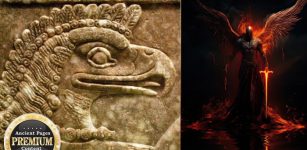 Apkallu – Seven Antediluvian Sages Created By God Enki – Were They The Watchers?
Featured Stories | Mar 27, 2019
Apkallu – Seven Antediluvian Sages Created By God Enki – Were They The Watchers?
Featured Stories | Mar 27, 2019 -
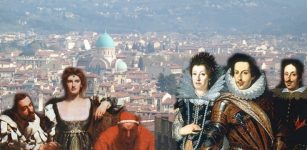 Feud Between The Medici And The Borgia Families – What Caused The Renaissance Clash?
Featured Stories | Mar 5, 2019
Feud Between The Medici And The Borgia Families – What Caused The Renaissance Clash?
Featured Stories | Mar 5, 2019 -
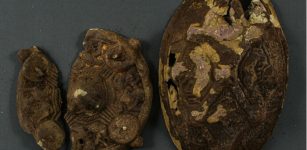 Family Looking For Lost Gold Ring Finds Viking Age Artifacts In Their Garden On The Island Of Jomfruland
Archaeology | Sep 30, 2023
Family Looking For Lost Gold Ring Finds Viking Age Artifacts In Their Garden On The Island Of Jomfruland
Archaeology | Sep 30, 2023 -
 What Was Life For Ancient Viking Children?
Ancient History Facts | Nov 1, 2016
What Was Life For Ancient Viking Children?
Ancient History Facts | Nov 1, 2016 -
 On This Day In History: American Astronomer Edwin Hubble Announced Existence Of Other Galaxies – On Dec 30, 1924
News | Dec 30, 2016
On This Day In History: American Astronomer Edwin Hubble Announced Existence Of Other Galaxies – On Dec 30, 1924
News | Dec 30, 2016 -
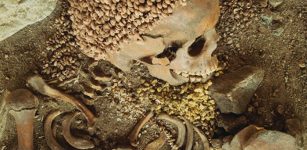 Broken Pebbles In Arene Candide Cave Shed New Light On Ancient Burial Practices
Archaeology | Mar 7, 2017
Broken Pebbles In Arene Candide Cave Shed New Light On Ancient Burial Practices
Archaeology | Mar 7, 2017 -
 Native Americans’ Unexplained Encounter With A Strange Underground Humanoid 500 Years Ago – Who Was This Being?
Featured Stories | Oct 31, 2024
Native Americans’ Unexplained Encounter With A Strange Underground Humanoid 500 Years Ago – Who Was This Being?
Featured Stories | Oct 31, 2024 -
 Sole Survivor Recalls An Incredible Unexplained Mountain Mystery
Featured Stories | Aug 7, 2023
Sole Survivor Recalls An Incredible Unexplained Mountain Mystery
Featured Stories | Aug 7, 2023 -
 Largest Ever Human Family Tree: 27 Million Ancestors Mapped
Archaeology | Feb 25, 2022
Largest Ever Human Family Tree: 27 Million Ancestors Mapped
Archaeology | Feb 25, 2022 -
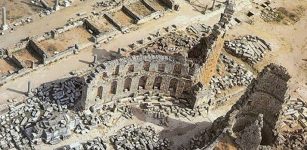 5,000-Year-Old Perga City And Kommagene Civilization: Most Of Treasures Are Still Underground
Archaeology | Dec 30, 2017
5,000-Year-Old Perga City And Kommagene Civilization: Most Of Treasures Are Still Underground
Archaeology | Dec 30, 2017 -
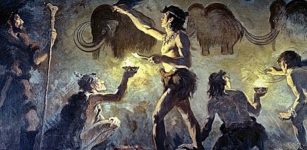 Cro-Magnon Man Invented First Indoor Lighting – An Unusual But Effective Oil Lamp
Ancient History Facts | Jan 22, 2019
Cro-Magnon Man Invented First Indoor Lighting – An Unusual But Effective Oil Lamp
Ancient History Facts | Jan 22, 2019

